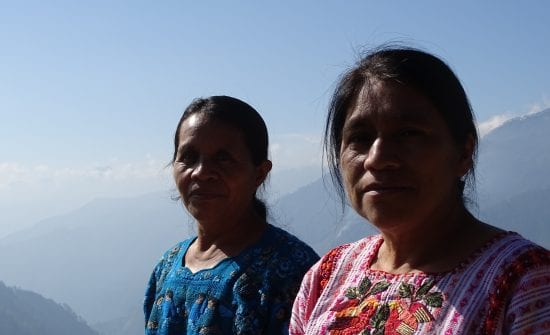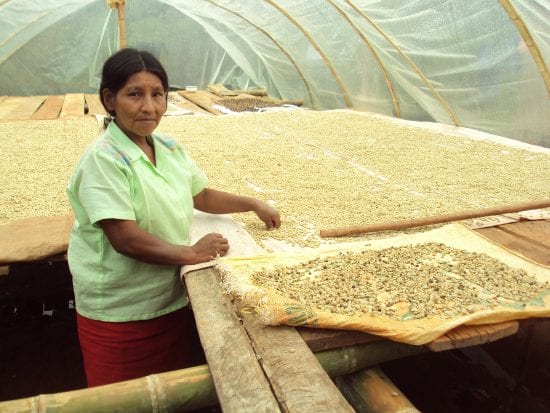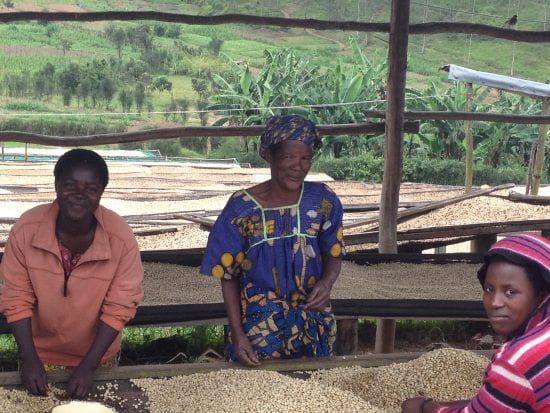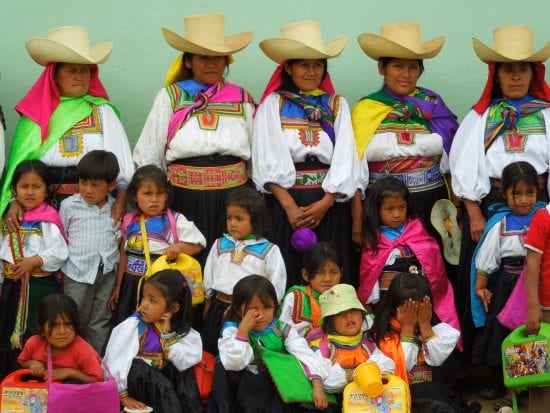
We’ve covered a number of stories about women-produced coffees, and in this series we hope to delve deeper into what it means to invest in female producers and how investment in women ensures better outcomes for not just farmers, but for all coffee.
BY ASHLEY RODRIGUEZ
BARISTA MAGAZINE ONLINE
Photos courtesy of Organic Products Trading Company
Barista Magazine note: This article was inspired by an amazing talk given by Katherine Oglietti and Connie Kolosvary at the Golden Bean North America event last September. They brought up the importance of not just highlighting female producers, but tangibly creating systems meant to empower and support them. My thanks and admiration go to them for bringing to light such an important topic.
In the past year, we’ve heard a lot about female-produced coffees. From Café Imports’ Women Producers Program to the annual JavaJog to support female coffee growers set to happen this April at the Global Specialty Coffee Expo, there are a number of amazing projects working to recognize the work that women do in coffee-producing countries. But, as with anything that becomes popular or on-trend, the term “female-produced” can easily be warped into the realm of buzzword or perhaps even gimmick. Eventually, the term “female-produced” can lose its meaning if used too often and without clear intention. Beyond a picture of a woman on a farm—or a straight-into-the-camera shot of a woman who we can only assume is a farmer or somehow involved in coffee growing—what does it mean for a coffee company to claim that a coffee is female-produced?

It’s not news that women are highly involved in the coffee supply chain and are essential players in the production of quality beans. Women are often found on the farm doing the laborious work of harvesting, picking, and sorting coffee cherries, but they are rarely involved in the transport and sale of coffee. “Women tend to play major roles in the initial segment of the value chain, whereas men typically transport and market the product,” an SCAA white paper on gender equity notes. Despite this fact, our perception of coffee farmers is often male-centered. “I am a woman and I have been working in coffee for a dozen years, but for the first 10 of those years I unthinkingly told stories of coffee-producing families by speaking of “the farmer and his family” without ever questioning why HE is the farmer,” shares Kim Elena Ionescu, Chief Sustainability Officer at the Specialty Coffee Association. “Because he takes the coffee to market? Because his name is on the deed to the property, if there is one? Because I’m repeating the language that everyone else uses? Only recently did it occur to me that unless the female head of household is employed off the farm, her work contributes equally, regardless of whether she spends the day picking coffee, collecting wood and water, or tending animals.”

Even when we do acknowledge the labor that women contribute on farms, their labor is rarely monetarily rewarded. The white paper also notes that women are typically responsible for about 70 percent of all the labor associated with producing coffee on the farm and during harvest, but are rarely present for tasks associated with receiving an income, like selling or transporting coffee. “Since men receive the money from coffee sales, women have greater difficulty accessing it … the distribution of labor into gender-stereotyped roles leads to a lack of earning power and control over income for women,” the paper reveals.

So what does “women’s coffee” mean? Technically, women are involved in pretty much any coffee you purchase, but the majority of landholders and income generators are men. “Women make up just 3 to 20 percent of landowners in the developing world, even though they comprise 20 to 50 percent of the agricultural labor depending on the country,” the white paper notes. In the best cases, according to the report, women have to rely on their husbands or families to provide them with money. In the worst cases, women siphon coffee beans to sell on the side so they can have their own source of income—a practice that can cause domestic disputes and even acts of violence. And when women do own land, they often earn less for their labor than men.
Initiatives such as the Café Femenino program, established in 2004 by Organic Products Trading Company, and the newly created Women Coffee Producers program from Café Imports, are working to ensure that companies that seek to highlight female producers are also attempting to correct the disparity between the labor women put into coffee and the income they receive. But that doesn’t mean you should buy a coffee simply because the bag features a photo of a woman or bears a female name. “Is this empowerment, or is this marketing?” asks Connie Kolosvary, director of the Cafe Femenino program at Organic Products Trading Company. Cafe Femenino works with female farmers all over the world to help them sell their coffee, giving them their own source of income and voice in their communities as landowners and members of the coffee-producing community. But Cafe Femenino is quick to note that the stories they tell and the images they share must have substance. “When I see an image of a woman coffee producer, I wonder whether she knows that the image is being used or what it is being used to promote. When I share a photo of a woman, I am mindful of how that image can help to empower her. I ask permission to take and share the image, and use it in a way that promotes the coffee that she is selling through Café Femenino or projects that support her through the Café Femenino Foundation,” Connie notes.

So why are organizations like this important? The answers seem obvious: Equity is an important goal in any field, and when we divest in women we’re not utilizing the full power of our workforce. But investing in women’s coffee produces positive outcomes for coffee beyond increased equity. “When women have more power to make decisions, there are more investments made in communities to nutrition and education,” Connie shares. The SCAA white paper cited multiple studies noting that, “women spend virtually all of their income from agricultural work on household needs, such as nutrition, school fees, clothing, health care, and home improvements, while men typically consume 25 percent or more of their income on consumables.”
In this series, we’ll unpack how organizations like Cafe Femenino and initiatives like the Women Coffee Producers project help build infrastructure meant to improve the lives of women producers, and therefore the lives of the community members they engage with. Through this series, we hope to illuminate the ways these initiatives actually contribute to bettering the lives of female producers. We hope to move beyond the term “female-produced” as promotion, and give tangible understanding and power to the important work being done to empower and support women at origin.

